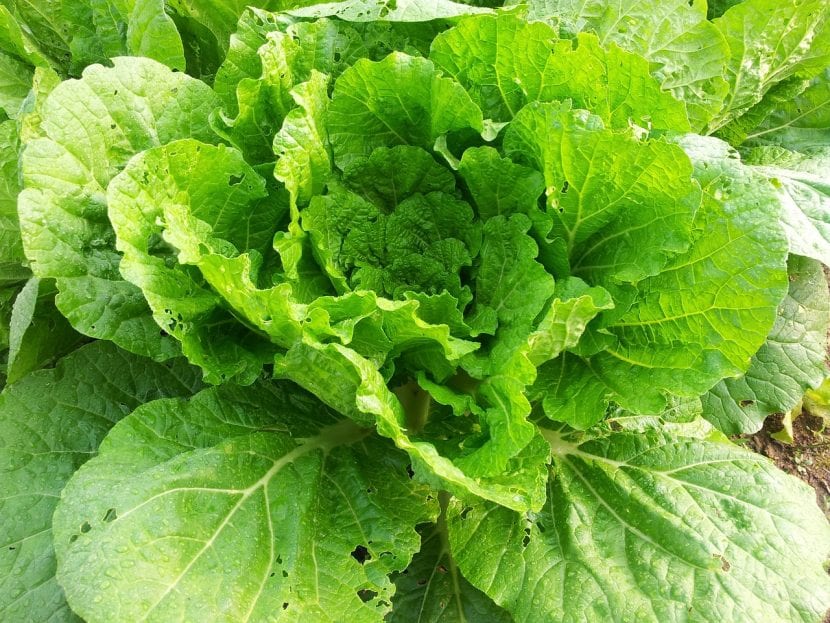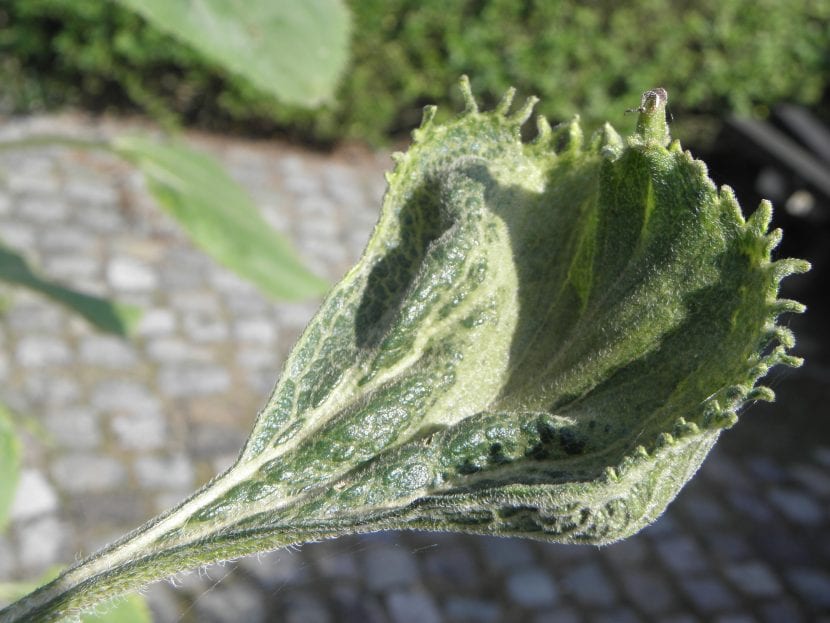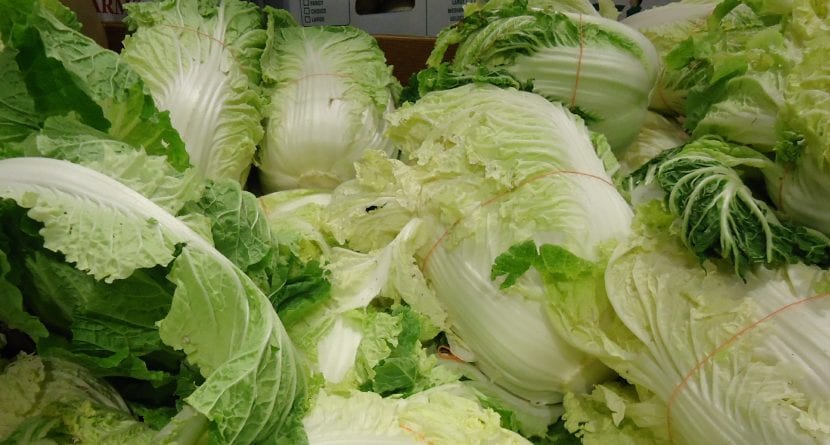
La Chinese cabbage It is a very easy-to-care vegetable that you can taste in different dishes after a few months from sowing. If you want to get an excellent harvest and, incidentally, better health, be sure to read this special article.
Surely you will learn many things that you did not know about her, Chinese cabbage. 😉
Origin and characteristics

Our protagonist is a biennial plant whose scientific name is Brassica rapa spp pekinensis which is known as Chinese cabbage or Chinese cabbage. Originally from the Far East, It has been cultivated in China for more than 1500 years. In recent times it has experienced a gradual diffusion to the countries of Europe and America.
It is characterized by being partially self-incompatible, that is, it is a hermaphroditic plant incapable of producing seeds by self-pollination despite the fact that it has viable gametes. It is a reproductive strategy to promote fertilization among specimens that are not related.
Its appearance is very reminiscent of that of romaine lettuce: at first its leaves grow erect and separated, and then they come together to form the clump. The flowers appear in spring, once the temperatures rise.
What are their cares?
If you want to savor Chinese cabbage, we recommend you keep these tips in mind:
Location
It is important that be abroad, full sun.
Earth
The soil where it will grow must have good drainage y be fertile. In the event that it was not, it would have to be fertilized with organic fertilizers (such as guano or chicken manure) before planting it.
Also, the pH should be between 6 and 7.
Irrigation
It has to be frequent: every 2 days, or 3 at the most. Before planting it, it is necessary to install the drip irrigation system so that we can avoid wasting water.
Subscriber
You have to remember to fertilize once a month with organic fertilizers in powder. A layer about 3cm thick is spread over the surface of the earth and then watered.
Multiplication
Chinese cabbage multiplies by seed in spring. For it, you have to follow this step by step:
- First, you have to fill a seedling tray (you can buy it here) with universal growing substrate.
- Then, it is watered and a maximum of two seeds are placed in each socket.
- The seeds are then covered with a thin layer of substrate and watered again, this time with a sprayer.
- Finally, the seedling is placed in a plastic tray without holes. Each time it is watered, this tray (not the seedbed) will be filled with water.
Thus the seeds will germinate in 1 to 2 weeks at most.
Harvest
The leaves will be ready for consumption at 70 or 90 days -depending on the climate- of its sowing.
Pests
It can be affected by the following:
- Leaf miners: fly larvae Liriomiza trifolii they destroy the leaves.
- Cabbage fly: the dipteran Chrothophilla brassicae it can destroy the main bud of the plant.
- Cabbage caterpillar: larvae of the Pieris cabbage they feed on the leaves.
All of them are treated with neem oil, Bacillus thuringiensis o potassium soap.
Management

Symptoms of mildew.
It can be affected by the following:
- Alternaria: it is a fungus that causes the appearance of black spots of 1cm with concentric rings of stronger color.
- Mildew: it is a fungus that causes the appearance of yellow spots on the upper surface and a grayish-white powder on the underside of the leaves.
They are treated with copper-based fungicides.
Rusticity
Is sensitive to cold. Temperatures below 8ºC harm it.
What uses does it have?
Edible
Chinese cabbage is used as an edible plant. It has been cultivated for a long time, first in China and now also in the rest of the world.
It can be eaten raw, for example in salads, or cooked in soups or meat stews. Its nutritional value per 100 grams is as follows:
- Calories: 13kcal
- Carbohydrates: 2,2g
- Proteins: 1,5g
- Fiber: 1g
- Fat: 0,2g
- Sodium: 65mg
- Calcium: 105mg
- Iron: 0,8mg
- Magnesium: 0mg
- Phosphorus: 37mg
- Potassium. 252mg
- Vitamin A: 0,22mg
- Vitamin B1: 0mg
- Vitamin B2: 0,1mg
- Vitamin B3: 0,5mg
- Vitamin B12: 0mg
- Vitamin C: 45mg
Medicinal
Chinese cabbage can also be used as a medicinal plant, as it has anticancer and diuretic properties, and also helps treat heart disease, reduce intestinal inflammation, regulate blood sugar levels and, if that were not enough, improves eye health.
Do you have side effects?
This plant contains glucosinolates, which are compounds that, in large quantities they are toxic. In fact, in 2009 an elderly woman who consumed between 1 and 1,5kg ended up suffering from hypothyroidism, which became complicated and transformed into a myxedema coma. You have more information here.
But the most common side effects are nausea, vomiting, dizziness, and indigestion; Although these can be avoided if it is prepared well and / or if you avoid consuming it if we have a weak digestive system.

Has it been useful to you?